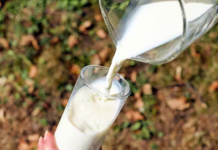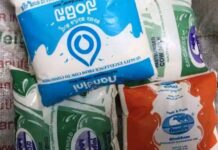New Delhi, October 18, 2023 : The global market for organic milk was estimated by Fact.MR to be worth US$ 159.75 million in 2022, with a 5% compound annual growth rate (CAGR) in demand from 2018 to 2022. Based on the most recent estimates, the market is expected to grow at a compound annual growth rate (CAGR) of 6.5% and reach a valuation of US$ 319.36 million by the end of 2033.
The surge in the sales of organic milk can be attributed to the burgeoning global demand for a diverse range of organic food products. This market is expected to thrive due to the escalating incidence of health issues such as diabetes, obesity, heart-related conditions, hypertension, and other health concerns.
Consumers perceive dairy products sourced from cows fed on organic or natural diets as superior in quality. This perception has led to a notable surge in the demand for milk that aligns with an organic and wholesome lifestyle. Such organic milk varieties are rich in essential nutrients that play a pivotal role in promoting and sustaining a healthy way of life.
Key Driving Forces Accelerating the Market Growth
· Consumers are becoming more health-conscious and seeking natural, organic, and healthier alternatives to conventional products. Organic milk is perceived as a healthier option due to the absence of synthetic pesticides, antibiotics, and hormones.
· Growing concerns about the environmental impact of conventional dairy farming practices, such as the use of chemical fertilizers and pesticides, have led consumers to opt for organic milk, which is produced using sustainable and environmentally friendly methods.
o United States market growth rate is expected to witness a 7% CAGR during the forecast period and reach US $ 90.06 Mn by 2033-end.
· There is a rising awareness of animal welfare issues, and consumers are choosing organic milk because organic dairy farms generally adhere to higher animal welfare standards.
· Government regulations and certifications for organic products provide assurance to consumers about the authenticity and quality of organic milk, fostering its growth. Moreover, the increasing availability of organic milk in various retail channels, including supermarkets, specialty stores, and online platforms, has made it more accessible to consumers.
Vital indicators shaping the future of the industry
· Changes in consumer preferences and behavior, such as increased demand for natural, organic, and sustainable products, will continue to drive the growth of the organic milk market in North America.
· Any changes in government regulations and organic certifications can impact the production, distribution, and marketing of organic milk, affecting consumer trust and market growth.
· The level of market penetration and the awareness of organic milk among consumers will significantly influence its future growth. Increased awareness through marketing and education campaigns can drive market expansion.
· The availability of organic milk in various retail channels, including supermarkets, specialty stores, and online platforms, will determine its accessibility and potential for growth.
· The level of competition in the organic milk market, including the presence of major dairy companies and smaller organic dairy farms, will affect pricing, product innovation, and market share dynamics.
Key Companies Profiled in This Report
· Danone
· Fonterra Co-Operative Group Limited
· Groupe Lactalis S.A.
· Dairy Farmers of America Inc.
· Arla Foods AmbA
· Agropour Dairy Co-Operative
· The Kroger Company
· Organic Valley Co-Operative
· Clover Stornetta Farms Inc.
· Stratus Family Creamery Inc.
Challenges hindering the market growth
· Organic dairy farming involves more expensive production practices, such as organic feed, higher labor costs, and reduced herd sizes, leading to higher production costs. This often translates into higher retail prices for organic milk compared to conventional milk.
· The transition of conventional dairy farms to organic practices takes time, and there may not be enough supply to meet the growing demand for organic milk. Limited supply can lead to supply shortages and price fluctuations.
· Consumers may perceive the price premium of organic milk as too high, leading them to choose conventional milk, especially during economic downturns.
· The organic milk market faces competition from conventional milk and plant-based milk alternatives, such as almond, soy, and oat milk, which can limit the market share of organic milk.
How competition influences the market
Organic milk producers have been focusing on product differentiation to stand out in a crowded market. This can lead to the introduction of various product offerings, such as flavored organic milk, organic milk-based beverages, and specialty formulations, catering to different consumer preferences and needs.
· In 2021, Lactalis Group acquired Leerdammer and Shostka, which is expected to help Lactalis Group develop quality and reputable local products.
Segmentation of Organic Milk Industry Research Report
· By Product Type:
o Skimmed
o Whole
o Partly Skimmed
· By Source:
o Cow
o Buffalo
· By Packaging Type:
o Pouches
o Cans
o Bottles
o Tetra Packs
o Bulk Packs
· By Flavor:
o Non-flavored
o Flavored
· By Distribution Channel:
o HoReCa (Hotels, Restaurants, & Catering)
o Specialty Stores
o Modern Trade
o Convenience Stores
o e-Retailers
· By Pasteurization Type:
o High-Temperature, Short-Time (HTST) Method
o Ultra-pasteurization (UP)
o Vat Pasteurization
· By Region:
o North America
o Europe
o Asia Pacific
o Latin America
o Middle East & Africa
Corporate Comm India (CCI Newswire)

































